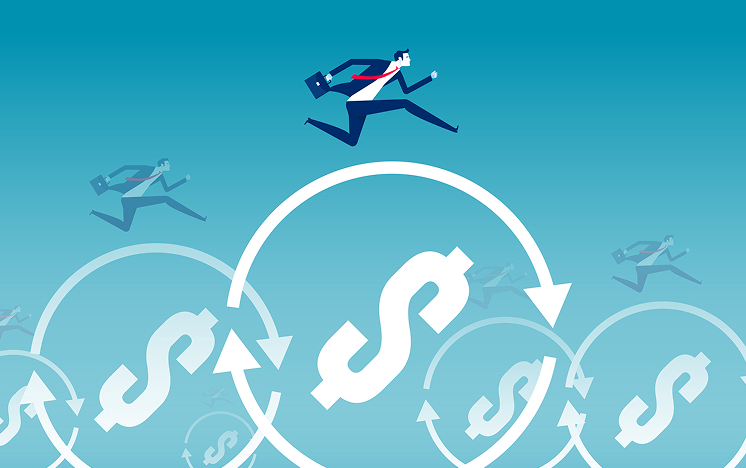Personal Loans vs. Balance Transfer Cards: Which is Best?

You’ve run up thousands of dollars of debt on your credit cards. And you’re tired of watching this debt grow each month. You’ve made a commitment to pay it off. So it’s time to consider personal loans vs. balance transfer cards for debt consolidation.
Personal loans vs balance transfer cards
You have two popular options — a balance transfer credit card and a personal loan. Both solutions:
- Offer lower interest rates
- Can help you wipe out your debt
- Have costs and pitfalls
Take a look at the pros and cons of personal loans vs. balance transfers, know your own strengths and weaknesses, and decide which solution is best for you.
Personal loans pros and cons
Personal loans, like credit cards, are unsecured. You can apply for a personal loan at a bank, credit union or with one of several online lenders. You repay your loan in monthly installments. At the end of the loan term, your debt is wiped clean.
- Interest rates are lower than comparable credit card rates
- Interest rates are usually fixed, so budgeting is easier
- The loan term is finite, so you know when you will have repaid your debt
Say you have $5,000 worth of credit card debt spread out over three credit cards with an average interest rate of 20%. You might qualify for a personal loan of $5,000 at an interest rate of 10 percent.
However, if your credit rating has suffered since getting your credit cards, you may not be able to obtain a lower interest rate. Other drawbacks of personal loans include:
- There may be fees, usually between 3% and 5% of the loan amount
- The payment may increase because credit card minimums can be very low (designed to keep you in debt for decades)
The viability of personal loans as an option depends on the interest rate you get. So it pays to shop aggressively with more than one provider.
Michael Micheletti, director of corporate communications with San Mateo, California-based Freedom Debt Relief, said that consumers too often accept whatever rate first comes with their personal loans. This is a mistake, Micheletti said.
“They don’t ask about rate options or discounts,” he said. “Many people see companies advertising a certain rate and assume that is their only option. Try to work with a lender who provides the opportunity to talk with professional loan consultants.”
Balance transfers
Balance transfer credit cards allow you to move your debt from higher-interest accounts to an interest-free account. The introductory rate can be good for up to 18 months. The longer the interest-free period, the better.
This gives you the chance to pay off your existing credit card debt without worrying about paying interest on it.
- Interest-free periods can save you a lot of money. By paying off $4,000 of debt with a 19% interest rate, you’d save $663 in interest charges if you pay it off in 18 months
- Credit cards are quick to get and you can apply and shop online
The key to successful repayment is to take care of it entirely during the 0% period.
There are disadvantages:
- Most card providers charge a balance transfer fee of 3% of the amount you transfer. That’s $120 for a $4,000 transfer.
- Some cards have “deferred” interest. That means if you don’t clear the entire balance before the new interest rate kicks in, the card issuer applies that new rate — retroactively — to your entire balance transferred. That can get very expensive.
- Balance transfers are open-ended and there is nothing to force you to wipe out your balance.
If you choose a balance transfer card, know exactly when you must pay off the balance to avoid interest charges. And make sure that you can afford the payment that will clear your balance in time.
Choosing personal loans vs balance transfer cards
Both options have fees, typically 3%. But personal loan interest rates are obviously greater than zero. So if you can pay off your entire balance within the zero interest period, the card is obviously the way to go.
You could clear $4,000 of debt at zero interest in 18 months with a payment of $222 per month.
But what of your balance was, say $10,000? If $556 a month is more than you can afford, a personal loan might offer a more comfortable payment. For instance, a three-year loan at 10% would get you a payment of $323.
Balance transfers might not work if you can’t trust yourself to make more than the minimum payment each month. If you don’t do this, you won’t pay off your debt before the 0 percent introductory offer ends.
Related: Personal Loan Interest Rates (How to Pay Less)
Combining balance transfers and personal loans
If your debts exceed what you can repay with a balance transfer credit card, you may have greater success combining the card and a personal loan. First, get approved for a personal loan so that you know what rate and terms you can expect. Then apply for your balance transfer credit card.
If you have $10,000 to pay off and can devote $300 a month toward repayment, it might look like this:
- Get preapproved for a personal loan with a 10% interest rate
- Transfer your balance to an 18-month zero interest card with a 3% fee
- After 18 payments of $300, your balance is $4,900
- Pay off the balance with a personal loan.
- 18 months at $303 per month, you’d pay off the personal loans balance including a 3% fee
In three years total, you’d be debt-free at a cost of $856 in interest and fees. If you paid off your credit cards in three years at 20%, the interest charges would be $3,379.
Being successful
The main issue with consolidating debt by transferring it to another account — whether it’s a credit card or loan — is that you still owe the money. And if you don’t change the negative spending habits that got you into trouble, you run the real risk of running up even more credit card debt.
Ryan Inman, president and founder of Financial Residency and Physician Wealth Services in San Diego, said that while a balance transfer can give consumers the chance to catch up on their credit card debt, it won’t solve the spending habits that got them into financial trouble.
This starts with creating a budget, one that lists all their monthly expenses.
“If they identify their fixed expenses, and then separate those from unnecessary expenditures, they can pinpoint what their spending weaknesses are,” Inman said. “From here, consumers should create a budget they can realistically stick to that minimizes these unnecessary expenses.”
Borrowers who have created a budget that specifies how much they can pay on their debt each month are far more likely to pay off their debt, says Morgan Taylor, finance expert and chief marketing officer for Scottsdale, Arizona-based LetMeBank.
Those who don’t may run up more credit card debt even after qualifying for a personal loan or balance transfer.
Maybe you rush to your local shopping mall every time a friend or loved one disappoints you. Maybe you buy clothes or electronics you don’t need because you’re suffering from depression. If you don’t first tackle these issues, you’ll never slow your spending, Taylor said.
“If a consumer doesn’t address the causes of getting into debt, then finding ‘hacks’ to get out of debt will likely backfire and increase the total debt.”











